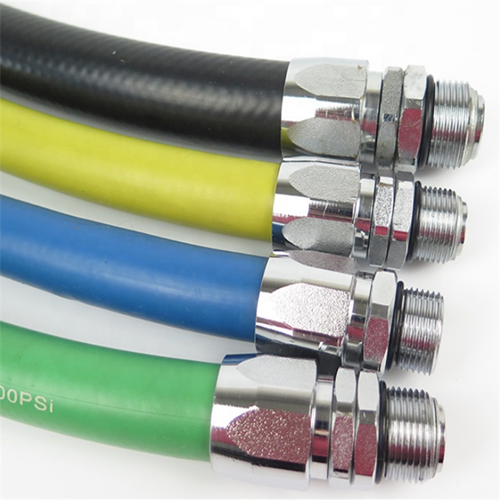335345435
Nov . 02, 2024 06:17 Back to list
braided hose assembly
Understanding Braided Hose Assembly A Comprehensive Guide
Braided hose assemblies are vital components in numerous industries, providing a reliable solution for the transfer of fluids and gases under various conditions. Their unique design offers a combination of flexibility, strength, and durability, making them suitable for high-pressure applications in automotive, aerospace, marine, and industrial sectors.
At the heart of a braided hose assembly is the hose itself, typically made from rubber or thermoplastic materials. The inner layer is designed to carry the fluid, while the outer layer consists of a braided reinforcement, usually made from steel or synthetic fibers. This braided layer plays a crucial role in enhancing the strength and resistance of the hose, allowing it to withstand high pressures while maintaining flexibility.
One of the primary advantages of braided hose assemblies is their ability to handle extreme temperatures and pressures. The braided construction helps to prevent the hose from collapsing under vacuum conditions and resists bursting under pressure. This is particularly important in applications such as hydraulic systems, where reliability and safety are paramount.
Moreover, braided hoses are resistant to abrasion and damage, which extends their lifespan and reduces the need for frequent replacements. Their flexibility allows for easy routing in tight spaces, making them ideal for complex systems where traditional rigid piping might be cumbersome.
braided hose assembly

When selecting a braided hose assembly, several factors must be considered. Firstly, it’s essential to choose a hose that is compatible with the fluid or gas being transported. Different materials have varying levels of chemical resistance, so understanding the specific application is crucial. Secondly, the pressure and temperature requirements must be evaluated to ensure the hose can safely handle the operating conditions.
The assembly process of braided hoses also requires attention to detail. Proper fittings must be selected to ensure leak-free connections. Crimped or swaged fittings are commonly used, providing a secure attachment that maintains the integrity of the assembly under high stress.
Regular maintenance and inspection of braided hose assemblies are essential to prevent failures. Signs of wear, such as abrasions or bulges, should be addressed immediately to avoid potential hazards. Implementing a routine inspection schedule can significantly enhance safety and reliability.
In conclusion, braided hose assemblies are indispensable in various applications due to their unique construction, which provides flexibility, strength, and durability. Understanding their components, advantages, and maintenance practices can lead to more effective and safe usage in critical systems. As industries continue to evolve, the demand for reliable braided hose assemblies will undeniably remain strong, underscoring their importance in modern engineering solutions.
-
SAE 100 R17 Black Smooth Cover Hydraulic Hose
NewsMar.07,2025
-
SAE 100 R17 Black Smooth Cover Hydraulic Hose
NewsMar.07,2025
-
SAE 100 R17 Black Smooth Cover Hydraulic Hose
NewsMar.07,2025
-
SAE 100 R17 Black Smooth Cover Hydraulic Hose
NewsMar.07,2025
-
SAE 100 R17 Black Smooth Cover Hydraulic Hose
NewsMar.07,2025
-
steel wire braided hydraulic hose
NewsMar.07,2025



